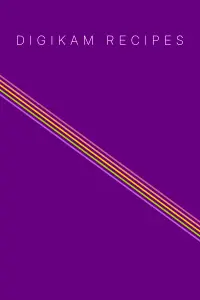digiKam 8.7.0 is released
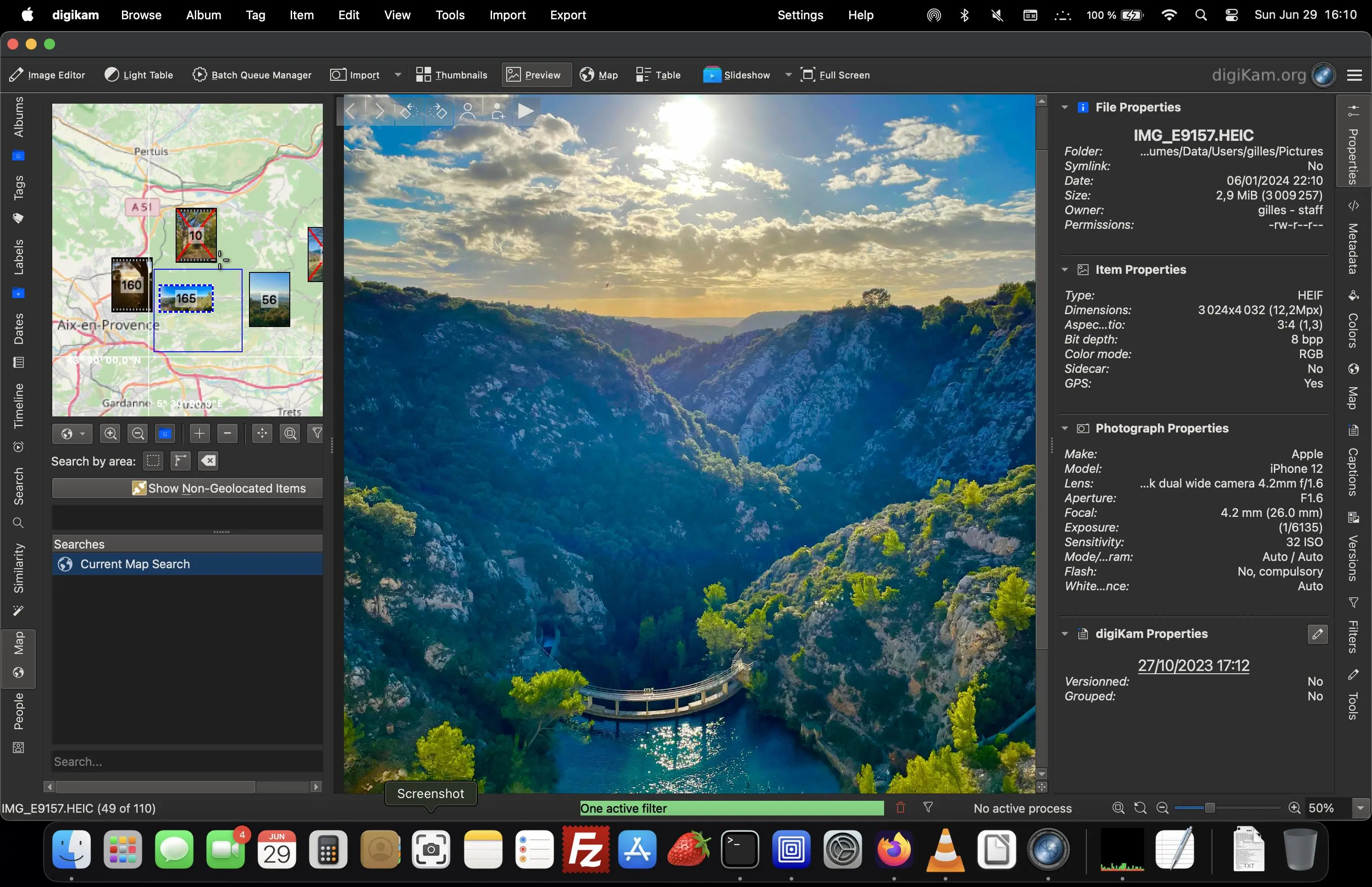 Dear digiKam fans and users,
Dear digiKam fans and users,
After four months of active maintenance and many weeks triaging bugs, the digiKam team is proud to present version 8.7.0 of its open source digital photo manager.
- New Features and Major Changes
- Internal Components Update
- Notable Bug Fixes
- Generalities
- Future Plans
- Final Words
The digiKam team has continued to work the Artificial Intelligence integration in digiKam, and many parts have been improved with the 8.7.0 release.
New Features and Major Changes
Face Management Updates and Improvements
The digiKam Face Management tool utilizes cutting-edge AI technology to automatically detect and recognize faces in images. You can access this feature via the People Tab from the left sidebar.
A new feature can be controlled in Settings -> Miscellaneous -> Behavior -> Background panel about to configure the face recognition scan to automatically start a new face recognition when new faces are confirmed or tagged. This will make the face tagging process easier.
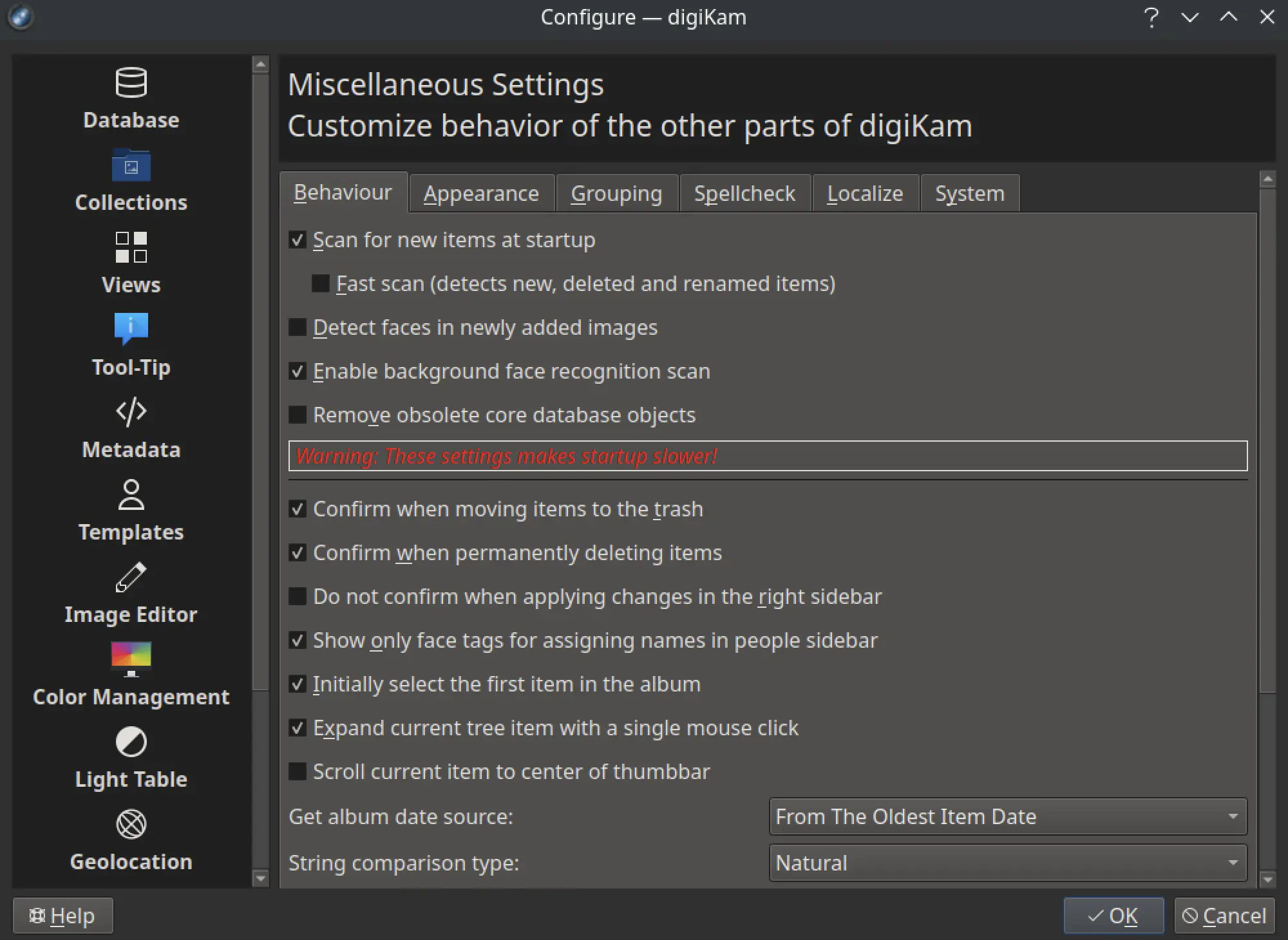
A face workflow improvement has been introduced with this version. digiKam now saves when a user rejects a suggested face match and will present the next best match if there is one to the user. This makes the face recognition process more reliable and precise than in previous versions.
The face management framework in digiKam was completely rewritten in version 8.6.0 and is based on leveraging cross-validating K Nearest Neighbor (KNN) and Support Vector Machine (SVM) classifiers, receives updates to improve performance and accuracy.
OpenCV OpenCL and CUDA Support
Another key improvement is the new option added in the Settings -> Miscellaneous -> Behavior -> System panel to check the availability of GPU processing with the Artificial Intelligence pipelines. Typically, images are transferred to the GPU for resizing and color format conversion. Additionally, the GPU-processed image is sent to the neural network layer, enabling the reference engine to process it on the GPU via the OpenCL framework. This allows digiKam to fully utilize the computer’s hardware capabilities. However, if GPU drivers are not fully installed on the computer, crashes or malfunctions can occur.
The user can now turn off OpenCL for the reference engine models, which can continue to be used elsewhere. A test function to ensure OpenCL functionality with the Artificial Intelligence functions has also been added to the configuration dialog.
In digiKam, the OpenCL support is managed by the OpenCV frameworks hardware acceleration layer. OpenCL relies on the GPU hardware drivers SDK which must be installed and functional. For the NVidia devices, CuDNN SDK is used through the CUDA framework by OpenCV.
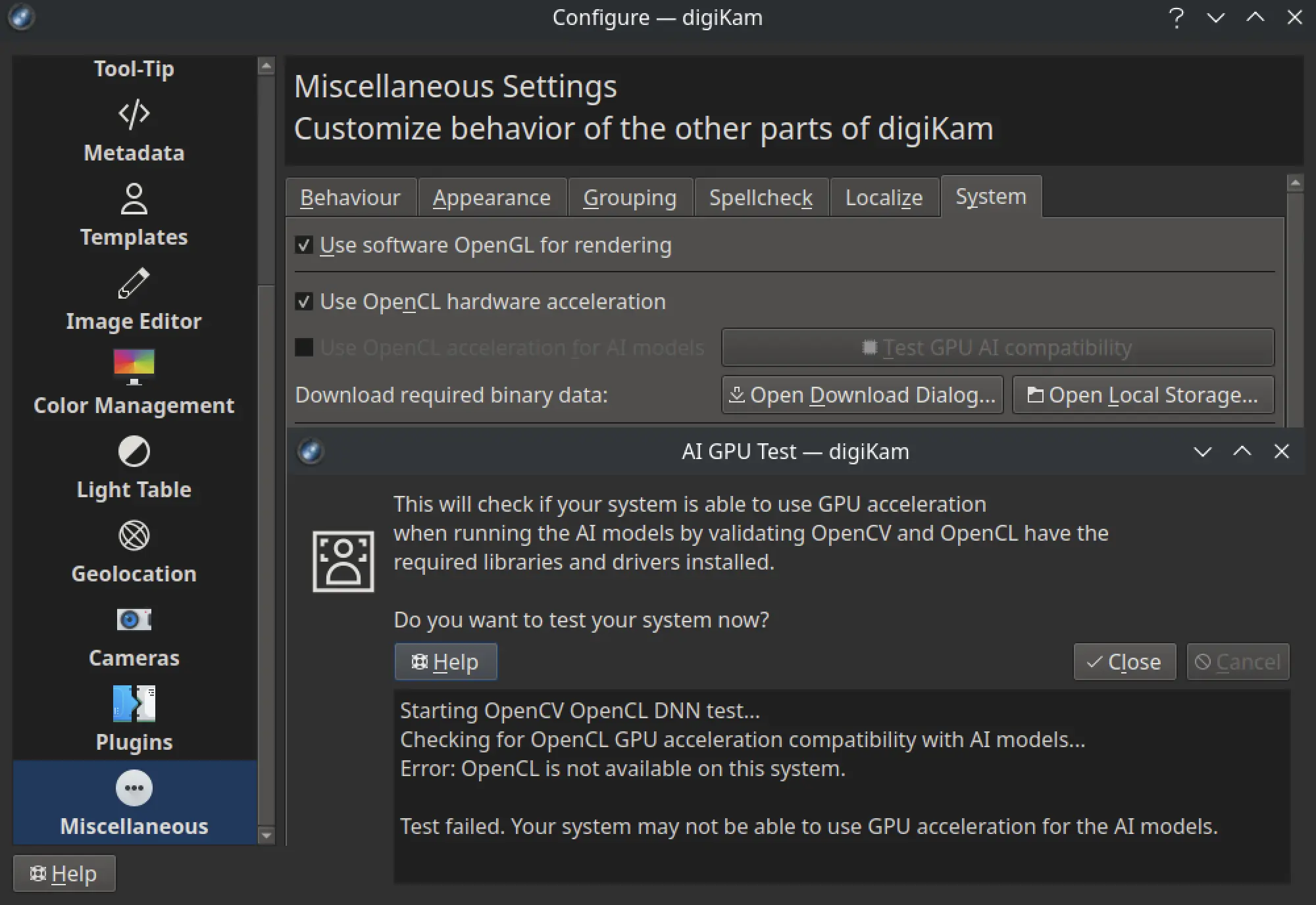
AI Auto-Rotation Tool
The Batch Queue Manager already includes a plugin to manually rotate images in a workflow. This implies that all images to be processed require the same orientation to be corrected. A new plugin has been designed to automate orientation detection through content analysis using a deep learning engine. This plugin applies the relevant rotation within your workflow. Compared to previous versions of digiKam, this new feature facilitates the correction of a large set of images simultaneously.
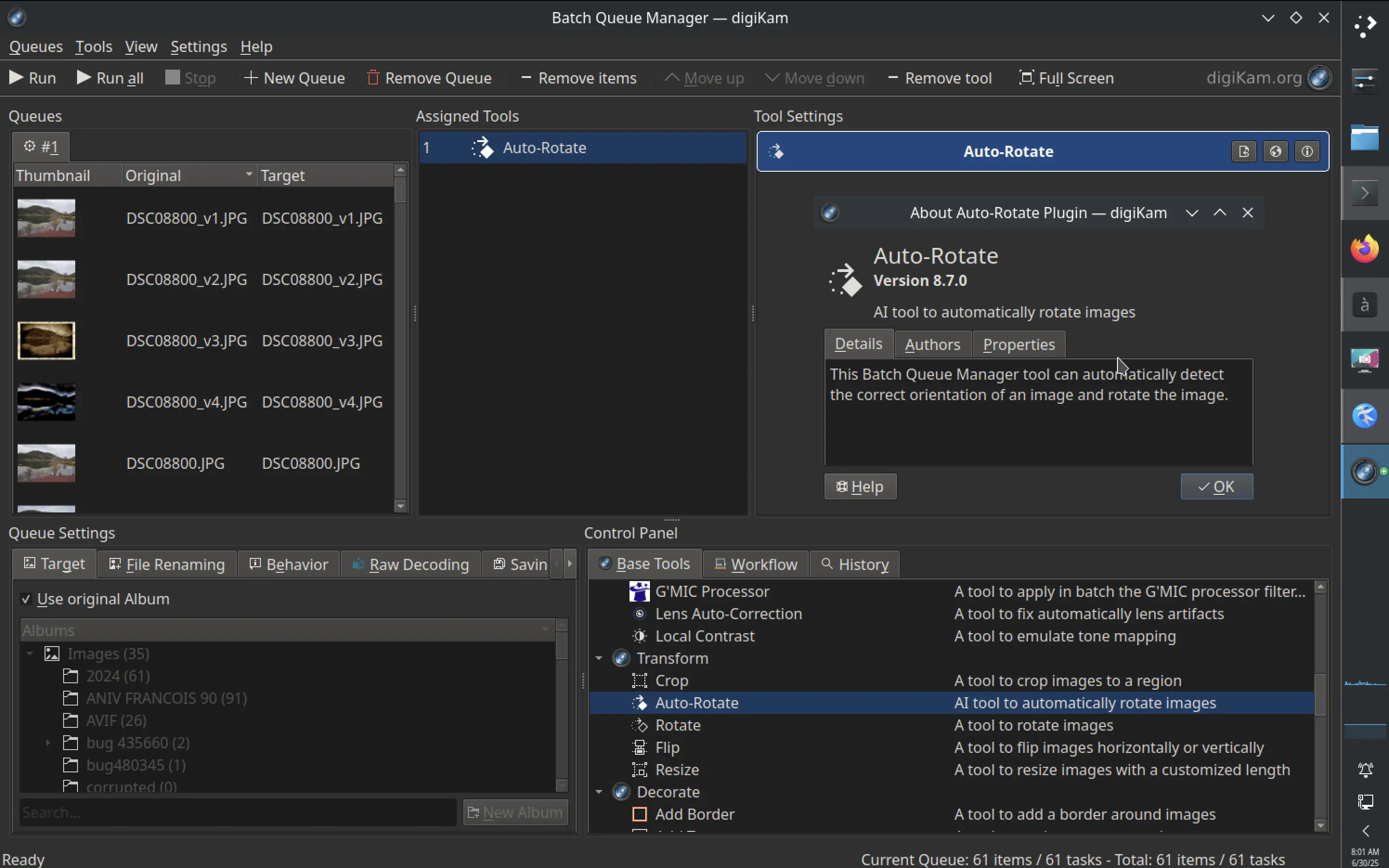
Internal Components Update
This version includes an update to the internal RAW decoder, Libraw, to the rolling-release snapshot from 2025-05-12, along with various bug fixes and more than 1260camera models supported.
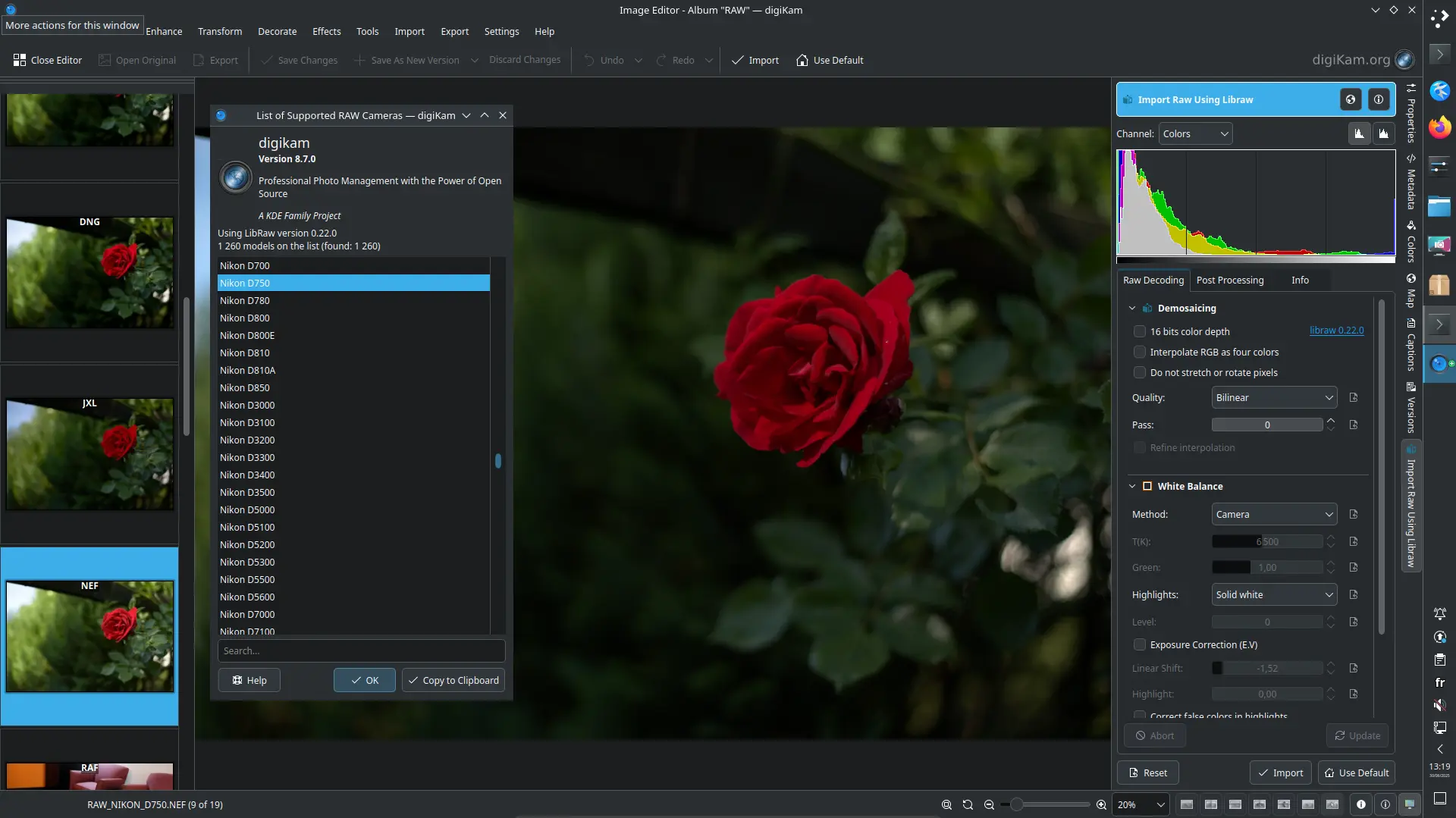
The industry-standard open-source component ExifTool has been updated to the latest 13.29 release in all bundles for metadata management.
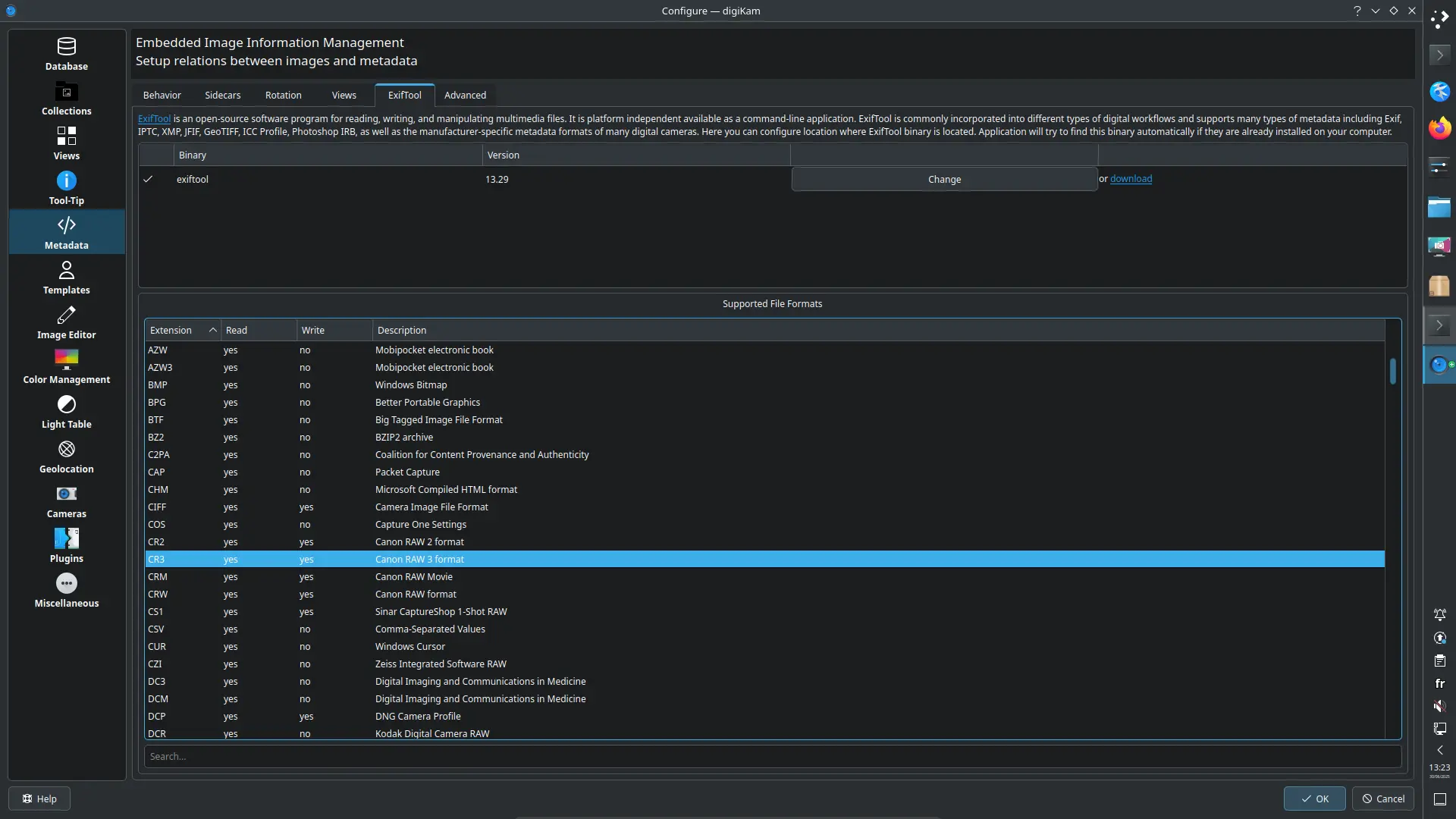
Linux and Windows bundles have been updated to the Qt framework version 6.8.3. MacOS package gain a more recent Qt update to last 6.9.0.
The famous G’MIC-Qt plugin available in Image Editor and the Batch Queue Manager is now updated to last 3.5.0. This digiKam version gains a new G’MIC Generic plugin working as layer mode from the stack of images (icon-view, Editor stack, Showfoto Stack, Light Table stack). This allows you to assemble photos together, for example using the Montage G’MIC filter.
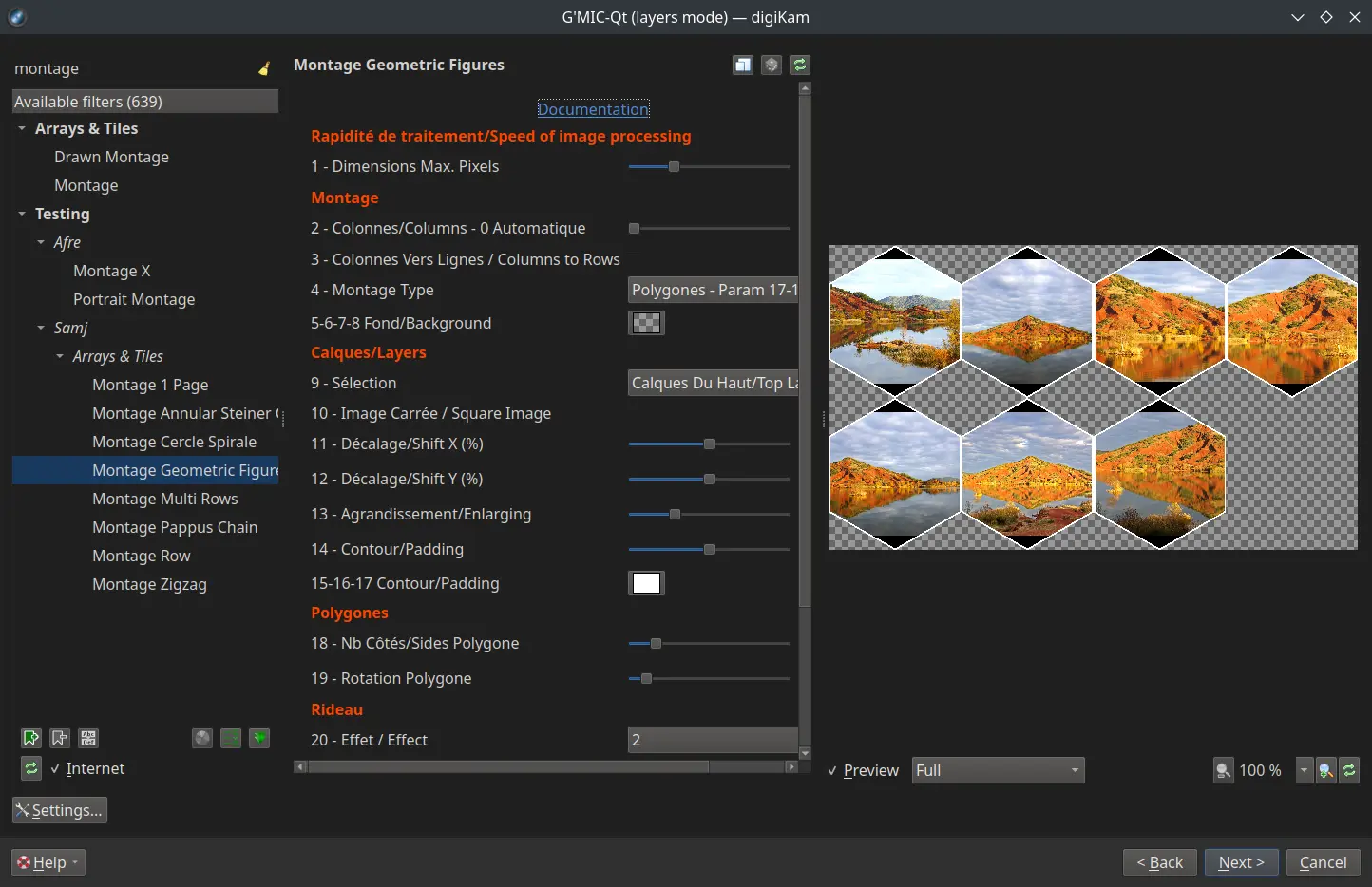
Notable Bug Fixes
- Fix wrong processing in the face management workflow 501257 498024 425263 425981 499301 415777 498104 495608 497791 498320
- Fix behavior in the face management user interface 389046 432760 499172 500140 463760 472416
- Fix crashes in the face workflow 502889 501627 488562 501905 502743
- Fix PKG installation with last Apple MacOs release 479307 479307 496380 496828 497285 505161
- Fix application remain in memory under after to quit 502754
- Fix about database dysfunctions 503894 367853 428187 501838 501978 495010
- Fix for the maintenance tool 496408 428941 480748 506030
- Fix for the search engine 398721 467786 479673 481252 504044 504048
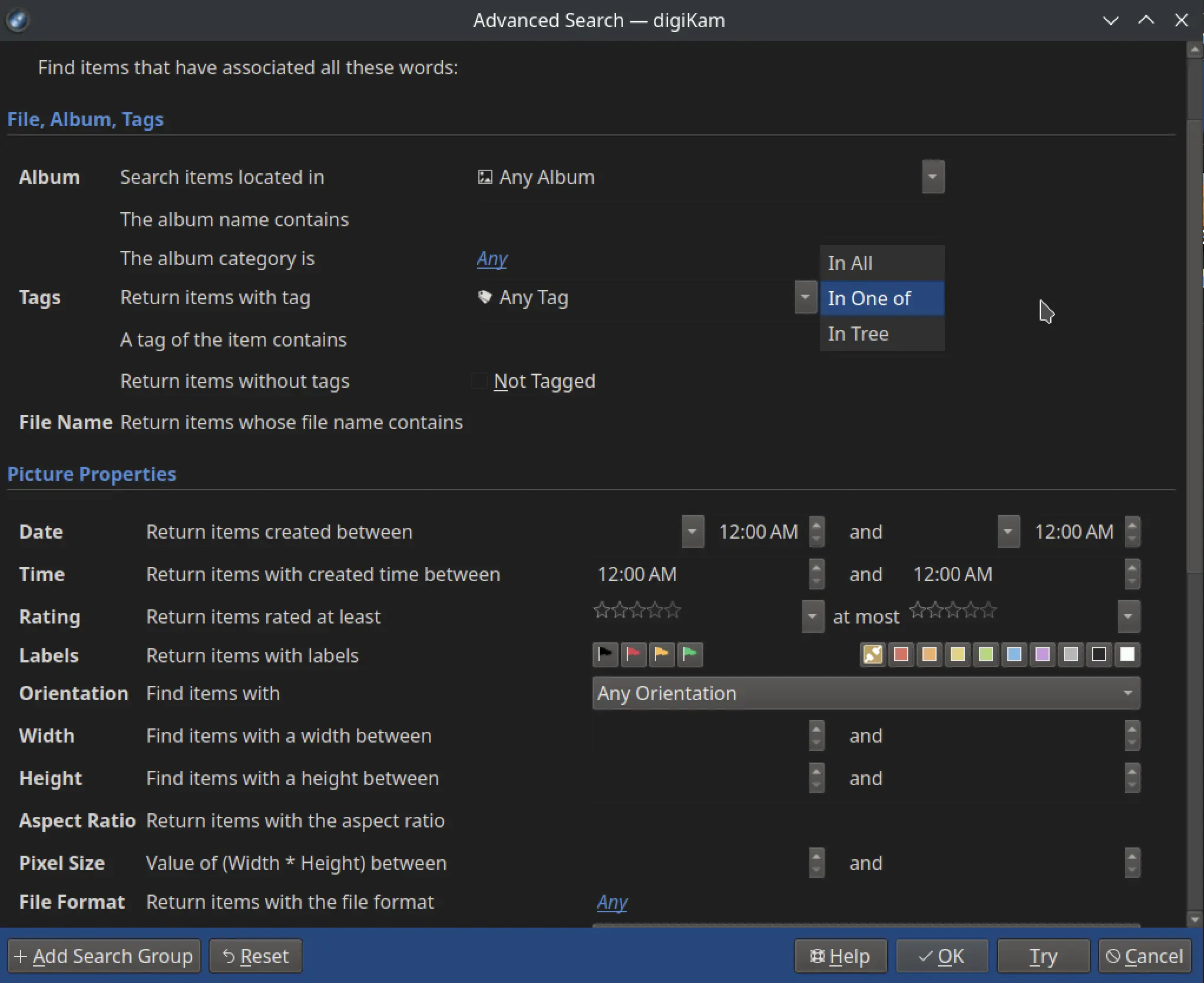
Generalities
241 bugs have been fixed, and we dedicated substantial time to reaching out to users to validate changes in pre-release versions. This ensured that fixes were confirmed before preparing the digiKam 8.7.0 release.
The internationalization of the application has been updated, and digiKam and Showfoto now support 61 languages for the graphical interface. To change the language, navigate to the Settings/Configure Languages dialog and select your preferred localization. Please restart digiKam to apply the changes. If you’re interested in contributing to the internationalization efforts, please contact the translator teams, following the translation how-to. The statistics about translation states are available here.
Thanks to the translators who have worked on the online documentation internationalisations which is available in 16 languages as French, German, Spanish, Italian, Japanese, Chinese, and more. You can read and search over the documentation here. You are welcome to contribute to application handbook translations following the coordination team instructions.
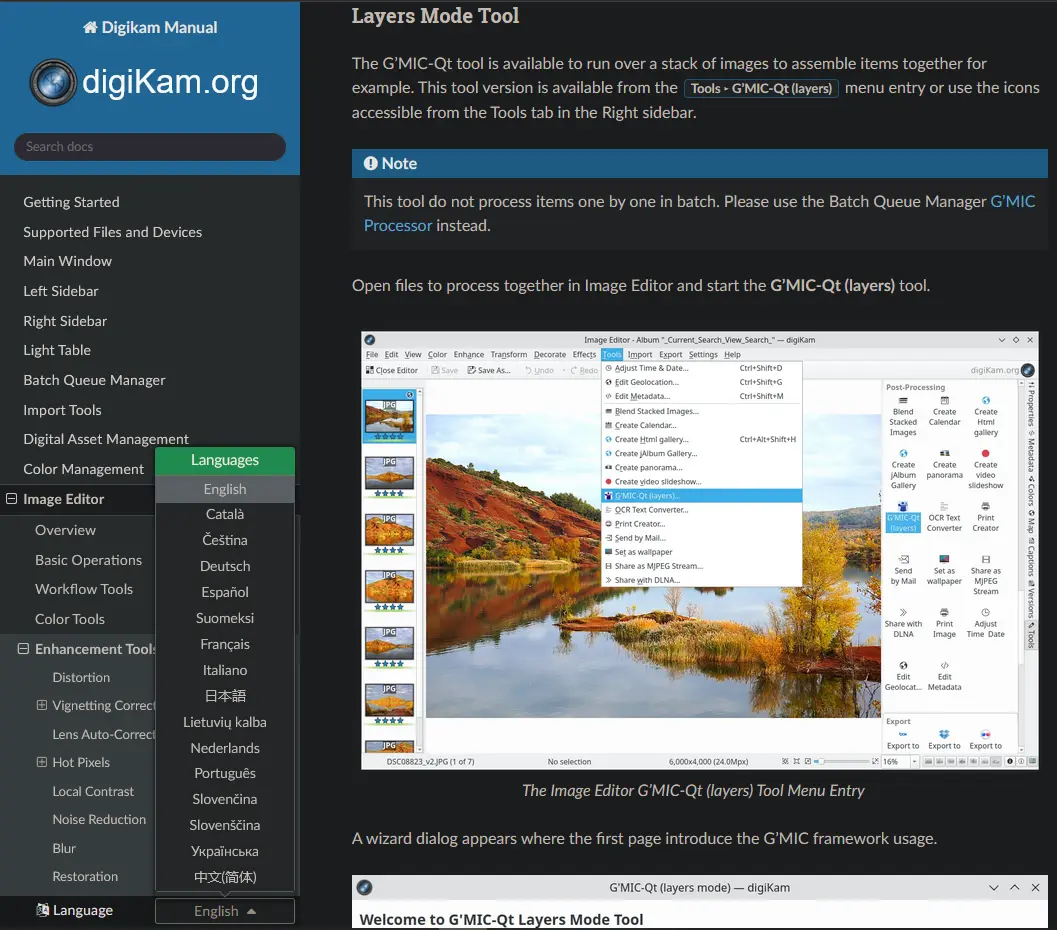
Future Plans
Next maintenance version is targeted for October 2025 with more bug fixes and improvements.
In the coming weeks, we will study more tools to use deep neural networks for automatic tasks, such as noise reduction, color adjustments, etc. Another important feature is to see if a LLM engine can be used as a natural language interface to query the database for the search of items in the collections.
Final Words
Thanks to all users for your support and donations, and to all contributors, students, testers who allowed us to improve this release.
digiKam 8.7.0 can be downloaded from this repository as:
- Source code tarball.
- Linux 64 bits AppImage bundles compatible with systems based on glibc >= 2.31.
- Windows 10 (or later) 64 bits installers or bundle archives.
- macOS Silicon and Intel packages.
Rendez-vous in a few months for the digiKam 8.8.0 release.
Have fun with digiKam…

